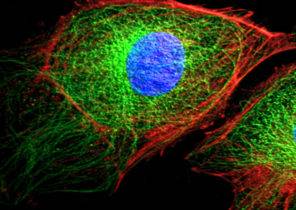Here’s the story: the hero goes into the past, finds a little of Hitler and prevent world war II, configuring it in a peaceful way… But suddenly… Oh no! The act triggers a chain of interconnected events, which ultimately hinder our hero to be born or, worse still, cause the end of the world.
In science fiction such unexpected consequences of time travel as the “butterfly effect” may become a big problem, but recently had reason to believe that the quantum world is a distortion of history hardly such a bad thing.
Because to go back is still too difficult, a pair of physicists from the us Los Alamos national laboratory decided to slightly lower the bar and to simulate such a journey with the help of a quantum computer IBM-Q.
“With the help of a quantum computer can easily simulate a reverse evolution or start the process backwards to the past,” says physicist Nikolai Sinitsyn.
Of course, we are not talking about such complex things as the creation of a universe with a lot of people and historical events. But even the playback of some situation between the different interconnected quantum States allows scientists to see what in the future result in tiny changes in the past.
“So we can really see what happens with a complex quantum world, if we go back in time a little something will change and come back. We found that the world is saved, and this means that there is no butterfly effect in quantum mechanics is not assumed,” says Sinitsyn.
Even if you’ve never heard of the butterfly effect, you are probably faced with him in works of fiction about time travel, where he continually makes itself felt. For example, ray Bradbury mentioned in his 1952 story “a sound of thunder”. There’s the main character changes the future, just crushing the butterfly.
In addition to fiction, sending a powerful effect on the fragile butterfly on the history is in the physical interpretation of chaos theory, once formulated in the famous statement meteorologist at mit, Edward Lorenz (Edward Lorenz): “does the flap of a butterfly tornado in Texas?”
Like doomed butterflies Bradbury, this mechanism in the framework of the theory of chaos can be far-reaching consequences that we have no hope ever to predict is so complex there are side effects.
But in the classical physical world we can imagine the Domino effect. Each Domino is discrete, and its behavior is predictable (even if the total chain associated with the process ultimately goes beyond maps, models and algorithms).
Quantum States change according to a completely different set of rules, and no one had been sure how the butterfly effect works in the quantum world.
In this case, Sinitsyn and his colleague, bin Yang wanted to know what will happen if they roll it back interactions that are confusing quantum waves of possibility — the unit superposition, which we call qubits — and then perform an action similar to that in the quantum world, the destruction of butterflies. Will the future be the same?
For those interested in the technical details: a limited number of entangled qubits passed through a set of logical gates, and then returned to its original environment.
After they returned to the original position, scientists made a measurement, effectively turning belonging to the qubits a great many “opportunities” in a stable “reality” and brought them out of superposition. Then the entire set of qubits is again brought into action.
“We found that even if the displaced qubit will change some of the entangled States, we still will easily be able to recover useful information, because the damage is not multiplied in the decoding process,” says Yang.
It turns out that our dying butterfly in the quantum world plays no role.
The researchers suggest that a complicated story of a qubit is not a fragile set of variables, subject to destruction, but precisely what saves his future. The farther the qubit traveling back in time, the more likely it is that our hero will return to the present with all the information in one piece.
Before you have time to fall into excessive enthusiasm about the implications of this study, let’s get one thing straight. Scientists not involved in the creation of a streaming drive, sorry. But the experimental results may find interesting applications in future quantum systems possible, in order to check if they work still on quantum rules.
“We found that the concept of chaos in classical physics and quantum mechanics should be interpreted in different ways,” says Sinitsyn.
The study is published in Physical Review Letters.





